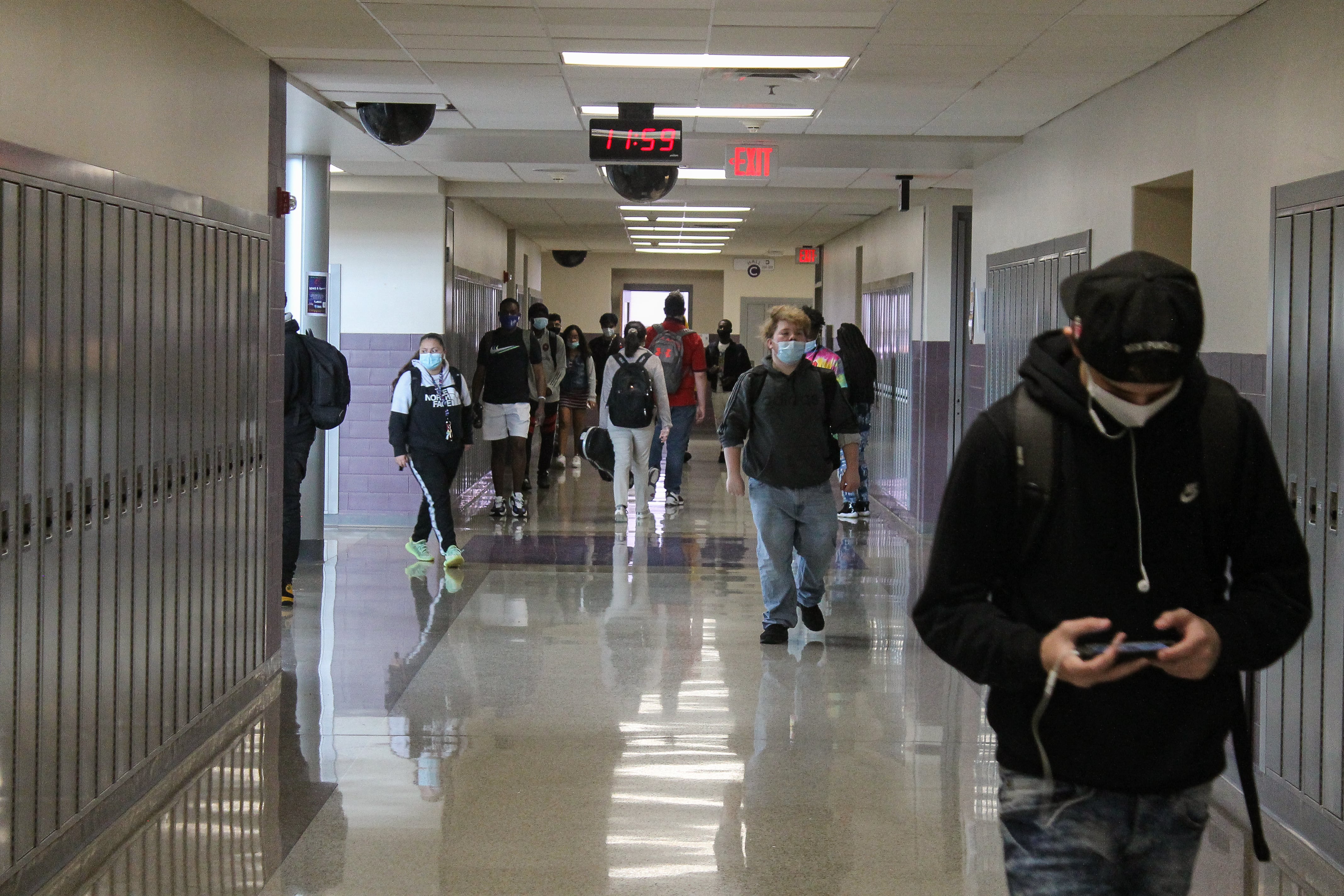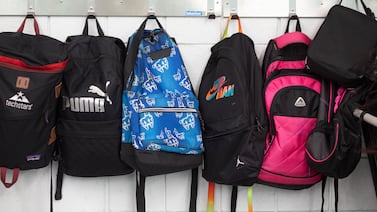Indiana data collected last school year offers some surprising insights into pandemic-era schooling and reveals stark gaps in learning opportunities, a state education report has shown.
Last school year, the state for the first time collected daily attendance data for each student, allowing for a comparison of how students attended classes during the pandemic and how the delivery of instruction affected test scores. The data revealed wide disparities.
Here are five key takeaways from the state data released last week:
Takeaway No. 1: In-person learning dominated despite the pandemic.
Public schools predominately offered in-person learning last school year, according to a presentation to the Indiana State Board of Education Thursday. About 67% of students statewide primarily took in-person classes.
Only about 5% of schools statewide had more than half their students attending remotely throughout the school year — a figure that includes Indiana’s many established virtual schools.
Other schools with high percentages of virtual learning tended to be “larger schools serving lower-achieving students,” according to the presentation.
About 1.5% of schools indicated they did not use virtual instruction at all last year.
Takeaway No. 2: But enrollment in in-person learning was unequal.
Despite the prevalence of in-person learning, only 40% of Black students primarily attended classes on campuses. One-third attended school mostly remotely.
White students had the highest rates of participation in in-person learning at 77.7% and the lowest rates of remote learning at 8%. Asian students had the highest rates of participation in hybrid learning at 10.9%.
Hispanic, Asian, and multiracial students also attended school in-person as their primary mode of instruction.
The rates of in-person versus virtual learning corresponded with family income level: Students who received free meals — a measure of poverty — participated in remote instruction at nearly twice the rate of students who paid for school meals.
Those least likely to attend school on campuses included former English learners who had reached fluency.
“We intend to look a bit deeper into our former English learner student population to get some more information about their overall performance and academic impact,” the state’s director of accountability, Maggie Paino, said in her presentation.
Some board members asked whether local health departments prevented in-person learning and wondered whether the state board should have a say in any decisions to close schools due to COVID cases.
“There were a lot of areas in Black communities that were not allowed to attend school [in person], especially not full capacity,” board member Erika Dilosa said. “So it’s not always a personal decision that was made within the family, but it was the decision of local governing officials.”
Takeaway No. 3: In-person learning was linked to higher academic performance.
Comparing the instruction data with spring test scores, the Department of Education concluded that in-person instruction was “uniformly the best mode of instruction for students, consistently leading to less academic impact than hybrid and virtual [learning].”
Schools that had more than half of students learning remotely saw moderate-to-significant declines in academic performance, Paino said, while scores for schools that provided mostly in-person learning suffered less severe drops.
Math scores took the biggest hits. In grades 5-8, students who took in-person classes scored proficient at twice the rate of students in remote learning. For performance, the state counted data from virtual schools as a separate category.
”In-person instruction really, really matters,” Secretary of Education Katie Jenner said. “What our teachers do in the classroom face-to-face really matters.”
Takeaway No. 4: There are limits to the data collected.
The 2020-21 school year was the first time the department collected daily attendance data for individual students, Paino said. But she noted that the data is incomplete, missing about 15% of school records.
The state also is missing attendance information for Black students at higher rates than any other student subgroup, with around 20% of records missing.
Chief Technology Officer John Keller blamed technical issues in the new system, noting that the department collected 199 million pieces of information in its attendance records.
The missing information would not likely significantly change the data reported, Jenner said, but would instead add students to each of the learning categories.
The data had other limits as well: It did not consider how well students engaged with learning, according to Paino, nor did it take into account whether lessons were synchronous or asynchronous — with a teacher either teaching in real time or previously recorded — or what local attendance policies looked like.
Paino also urged caution in using the data to draw conclusions about learning methods and student academics because of the heavy impact of the COVID-19 pandemic over the last year.
“There are so many factors that we cannot control as we’re looking through this data,” Paino said.
Takeaway No. 5: Virtual attendance numbers may be misleading.
Because Indiana doesn’t set rules for how schools take attendance in remote learning, practices vary widely. Some school districts required daily log-ins, set minimum login time, or mandated that schoolwork meet a deadline for a student to be counted present.
The School City of Hammond in northwest Indiana required students to either attend in person or sign on remotely for at least 75% of the day in order to be marked present.
In contrast, schools in the South Bend Community School Corporation could mark students present if they completed their assignments by the end of the week, Chief Academic Officer Brandon White said — even if a technology issue or other conflict prevented them from attending a virtual class.
The state of Connecticut requires students to be present for at least half of the instructional day — in line with pre-pandemic federal policy and making remote attendance more comparable to in-person attendance. That’s an example of how to set attendance requirements, said Hedy Chang, executive director of the national nonprofit Attendance Works.
She recommended schools monitor contact, connectivity, relationships, chronic absence, and attendance in both in-person and remote learning.
Despite an average attendance rate of 94%, the Hammond school district had lower passing rates in English and math on state ILEARN tests last spring compared with 2019. (The state did not administer tests in 2020 because of the pandemic.) District spokeswoman LeAnne Munoz said that the pandemic took a toll on students, and that school officials want students to learn in person this year.








